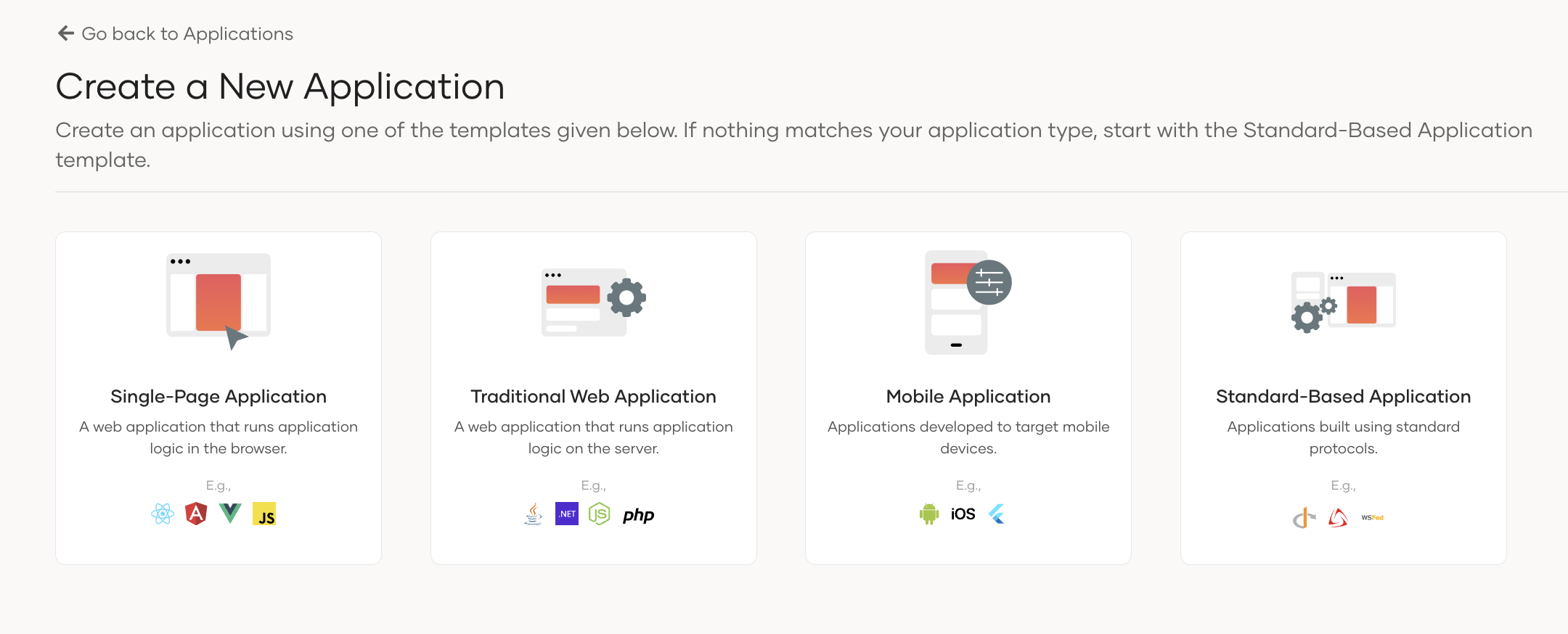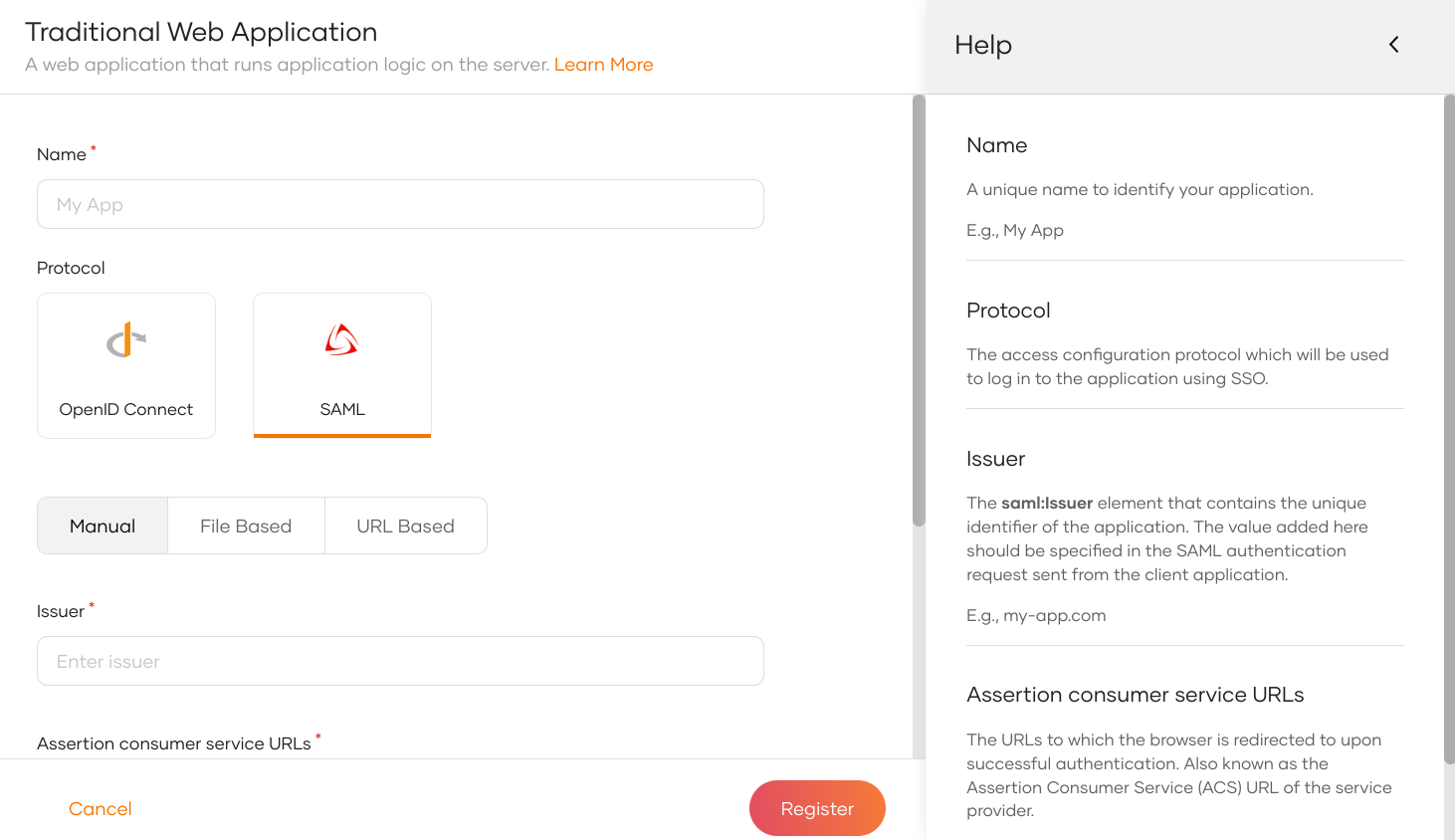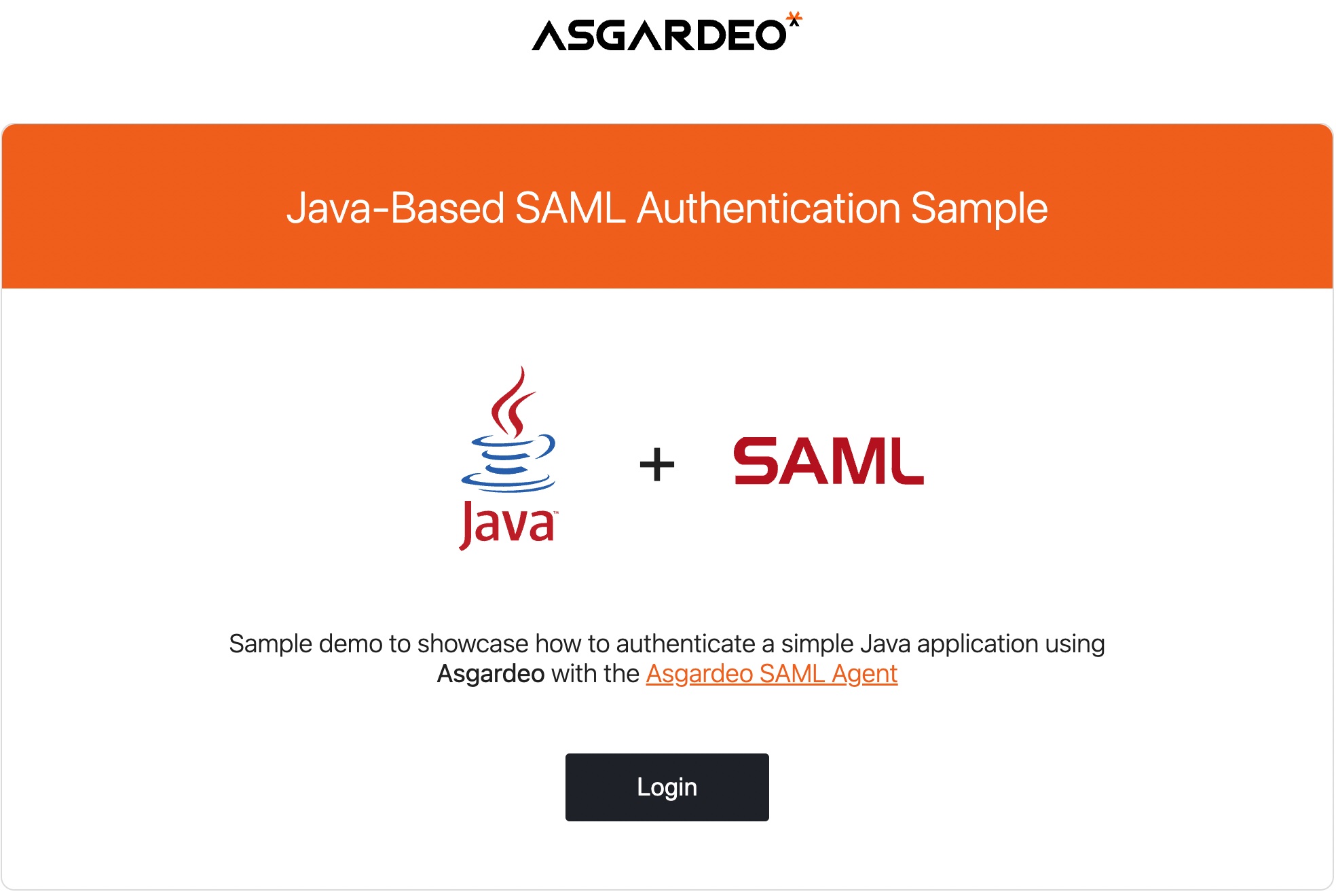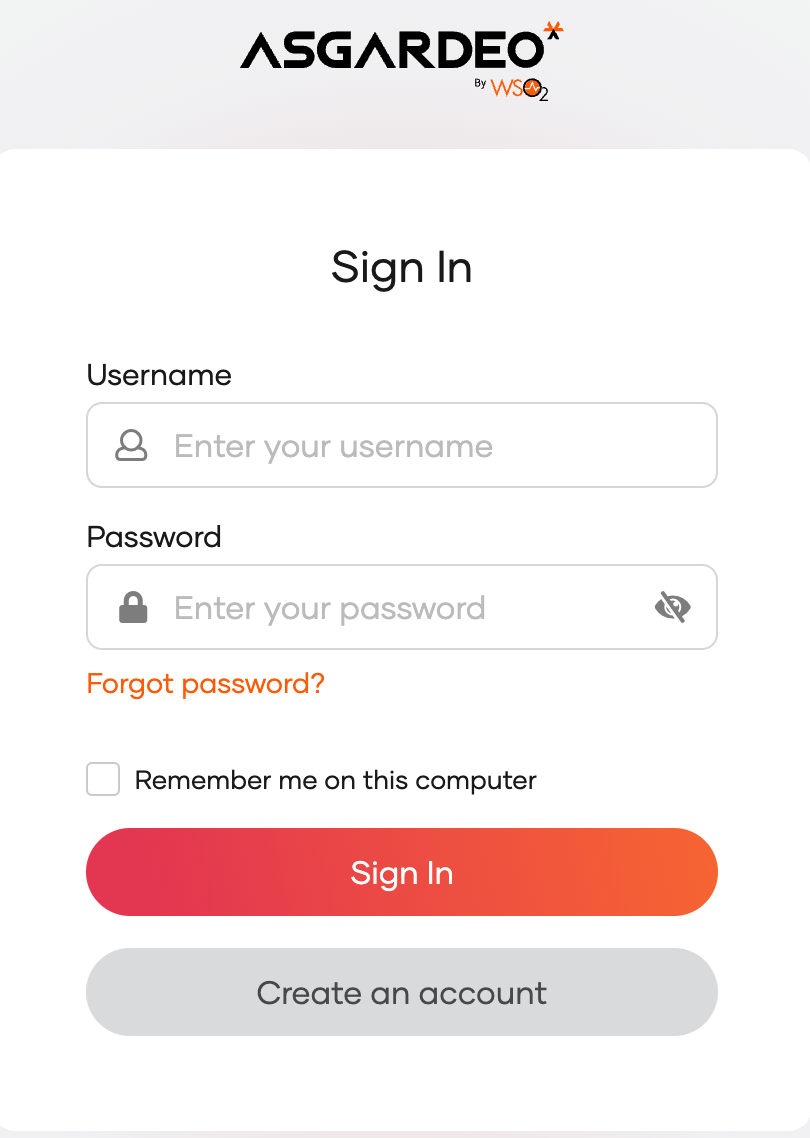Java EE sample web app with SAML
# Java EE sample web app with SAML
By following this guide, you will be able to deploy a Java EE web application locally and secure it with SAML.
# Prerequisites
Apache tomcat 9.x or 8.x
If you don't have it, install Apache tomcat (opens new window).
A user account in Asgardeo
If you don't already have one, create a user account in Asgardeo.
# Register the app
Follow these steps given below to register the sample Java EE web application in Asgardeo.
On the Asgardeo Console (opens new window), go to Applications.
Click New Application and select Traditional Web Application.

Enter the following details:

Name Give a unique name to identify your application. sample-appProtocol Select SAML. Select Manual as the configuration type and enter the following details:
Learn more about other SAML configuration types.
Issuer Add a unique identifier for the application. This should be used in the SAML authentication request sent from the client. You can't change the issuer after the app is registered. sample-issuerAssertion consumer service URLs The URL to which the user is redirected after login and logout. Use the following URL for this sample app: http://localhost:8080/sample-app/home.jspClick Register to complete the registration.
To provide a better experience for the user, it is recommended to configure an access URL for the application. You can set an access URL for the application from the General tab. (For this sample application, the access URL is https://localhost:8080/sample-app)
Why do we recommend this?
- It will be used in the application catalog and discovery flows.
- We will use it to redirect the user back to the application in the following scenarios.
- If the login page times out
- After a password reset
- After self sign-up verification
- If the login flow is failed, we will provide an option for the user to re-initiate the login flow using this URL.
# Download the sample
Click the button below to download the sample. You can also choose to view the source before doing so.
# Configure the sample
Follow the steps given below to configure the sample app.
Move the war file that you downloaded to the
<TOMCAT_HOME>/webappsfolder where<TOMCAT_HOME>is the root of your Tomcat server.Open a terminal, navigate to the
<TOMCAT_HOME>/binfolder, and start the Tomcat server using the following command:This will extract the contents of the war file.
If your Tomcat server is set to auto-deploy applications, you can skip this step.sh catalina.sh start1Go to the
<TOMCAT_HOME>/webapps/sample-app/WEB-INF/classesfolder and open thesample-app.propertiesfile in a text editor.Update the following in the
sample-app.propertiesfile:Important
- Update the SAML2.IdPEntityId parameter with the Asgardeo issuer, which is
api.asgardeo.io/t/{organization_name}. - Replace
{organization_name}with the name of your organization. - SAML2.SPEntityId should match the issuer name entered when registering the application in Asgardeo.
SAML2.AssertionConsumerURL=http://localhost:8080/sample-app/home.jsp SAML2.SPEntityId=sample-issuer SAML2.IdPEntityId=api.asgardeo.io/t/{organization_name} SAML2.IdPURL=https://api.asgardeo.io/t/{orgaization_name}/samlsso IdPPublicCert={public_cert_of_asgardeo_organization} SkipURIs=/sample-app/index.html #Other properties IdPPublicCertAlias=wso2carbon EnableSAML2SSOLogin=true SAML2.EnableSLO=true SAML2.EnableResponseSigning=false SAML2.EnableAssertionSigning=false SAML2.EnableAssertionEncryption=false SAML2.EnableRequestSigning=false SAML2.IsPassiveAuthn=false SAML2.SLOURL=logout IndexPage=index.html ErrorPage=/error.jsp SAML2SSOURL=samlsso1
2
3
4
5
6
7
8
9
10
11
12
13
14
15
16
17
18
19
20Configuration Description SAML2.AssertionConsumerURLThe URL to which the user is redirected after login and logout. SAML2.SPEntityIdThe SAML issuer that is used when registering your application with Asgardeo. SAML2.IdPEntityIdThe issuer name of Asgardeo. api.asgardeo.io/t/{organization_name}SAML2.IdPURLThe endpoint of Asgardeo to which login and logout requests should be sent: https://api.asgardeo.io/t/{organization_name}/samlssoIdPPublicCertThis specifies the public certificate of Asgardeo. You can obtain the public certificate from the Asgardeo Console. See how to get SAML configurations from the Asgardeo Console. skipURIsDefines the web pages in your application that should not be secured and does not require authentication. Other properties
Configuration Description EnableSAML2SSOLoginSpecifies whether single sign-on is enabled for this application. SAML2.EnableSLOSpecifies whether logout is enabled for this application. SAML2.EnableResponseSigningIf this configuration is set to true, the application validates the signature in the SAML response. You also need to enable response signing from Asgardeo. If this configuration is set tofalse, the application does not mandate response signing from Asgardeo.SAML2.EnableAssertionSigningIf this configuration is set to true, the application validates the signature in the SAML assertion. You also need to enable response signing from Asgardeo. If this configuration is set tofalse, the application does not mandate response signing from Asgardeo.SAML2.EnableAssertionEncryptionIf this configuration is set to true, the application expects an encrypted SAML assertion. You also need to enable encryption for SAML assertions from Asgardeo.SAML2.EnableRequestSigningIf this configuration is set to true, Asgardeo validates the SAML authentication request and logout request. You also need to enable request signing from Asgardeo.SAML2.IsPassiveAuthnSpecifies whether to enable passive authentication. KeyStorePasswordKeystore password of your application. PrivateKeyAliasPrivate key alias of your application. PrivateKeyPasswordPassword of the private key of your application. - Update the SAML2.IdPEntityId parameter with the Asgardeo issuer, which is
In the
<TOMCAT_HOME>/bin>folder, run the following commands to restart the Tomcat server for the configurations to take effect:sh catalina.sh stop sh catalina.sh start1
2
# Run the sample
Follow the steps given below to run the sample.
Access the application using the following URL:
http://localhost:8080/sample-app/index.html.
Click Login. You will be redirected to the Asgardeo login page.

Enter credentials of your user account and click Sign In.
Extend your login session
By default, the user login session is active for only
15 minutes. You can extend the session to14 daysby selecting the Remember me on this computer option provided at the login screen of your application.


